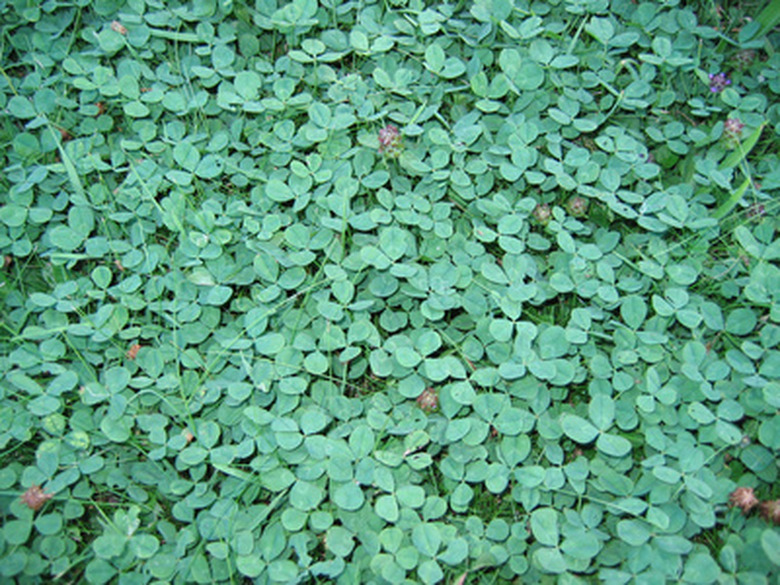How To Kill Clovers Without Killing The Grass
Clover is a perennial legume that often pops up in large patches in lawns in the summertime. But clover is rarely found in healthy, thick-growing lawns. It almost exclusively crops up in thin lawns that have not been adequately fertilized. Once you kill the clover in your grass, prevent it from coming back by seeding thin spots in the lawn and maintaining a regular fertilization schedule.
Step 1
Water the lawn with 1 to 2 inches of water the day before you treat it.
Step 2
Spray the lawn with a post-emergent, broad-leaf herbicide. Make sure it is labeled for use on clover and as safe for use on your specific variety of grass. Use a hose-end sprayer, pump or hand sprayer to coat the clover in herbicide according to the manufacturer's instructions. Stop just before the point of runoff.
- Clover is a perennial legume that often pops up in large patches in lawns in the summertime.
- Once you kill the clover in your grass, prevent it from coming back by seeding thin spots in the lawn and maintaining a regular fertilization schedule.
Step 3
Re-spray the lawn as needed, at the intervals prescribed by the herbicide manufacturer.
Kill Clovers Without Killing The Grass
Clovers such as white clover (Trifolium repens) and related plants (Trifolium spp.) infest lawns year-round, but fertilizing regularly, removing clover plants or spraying with a broad-leaved weed herbicide provide control without harming the grass. Another option is to learn to live with these beneficial weeds. White clover is one of the most common lawn weeds. Hardy in U.S. Department of Agriculture plant hardiness zones 3 through 10, white clover grows 3 to 6 inches tall and 12 to 18 inches wide. Clovers are nitrogen-fixing plants, which means they take nitrogen from the air, and microorganisms in their special root nodules convert it into a form plants can use. Nitrogen is an essential plant nutrient. Fertilizing lawns encourages grass to grow strongly and become the dominant plant once more. Clover clumps spread widely but their root systems are narrow. If you dig up plants when they're small and remove the whole root system, you can prevent clover from taking over a lawn. Gather the stems in one hand to expose the base of the plant, and push a trowel vertically into the soil at the plant's base. The best time for applying a broad-leaved weed herbicide containing 4.85 percent 2,4-D, 1.61 percent quinclorac and 0.45 percent dicamba is when the weeds are small and actively grown. Evenly spraying your entire lawn helps to control well-integrated clover, but localized application involves targeting only the areas with patches of clover.
- Re-spray the lawn as needed, at the intervals prescribed by the herbicide manufacturer.
- Clovers such as white clover (Trifolium repens) and related plants (Trifolium spp.) infest lawns year-round, but fertilizing regularly, removing clover plants or spraying with a broad-leaved weed herbicide provide control without harming the grass.
Things Needed
- Herbicide
- Hose
Tip
Do not use herbicide if the temperature climbs above 85 degrees Fahrenheit. Spray early in the morning on a day with no wind and no rain forecast for the next 48 hours. Use herbicides that contain 2,4-D, dicamba or MCPP/MCPA. Small patches of clover can simply be hand-weeded. Take care not to accidentally spray your garden plants. Broad-leaf herbicides are safe to use on grass but will kill garden plants.
